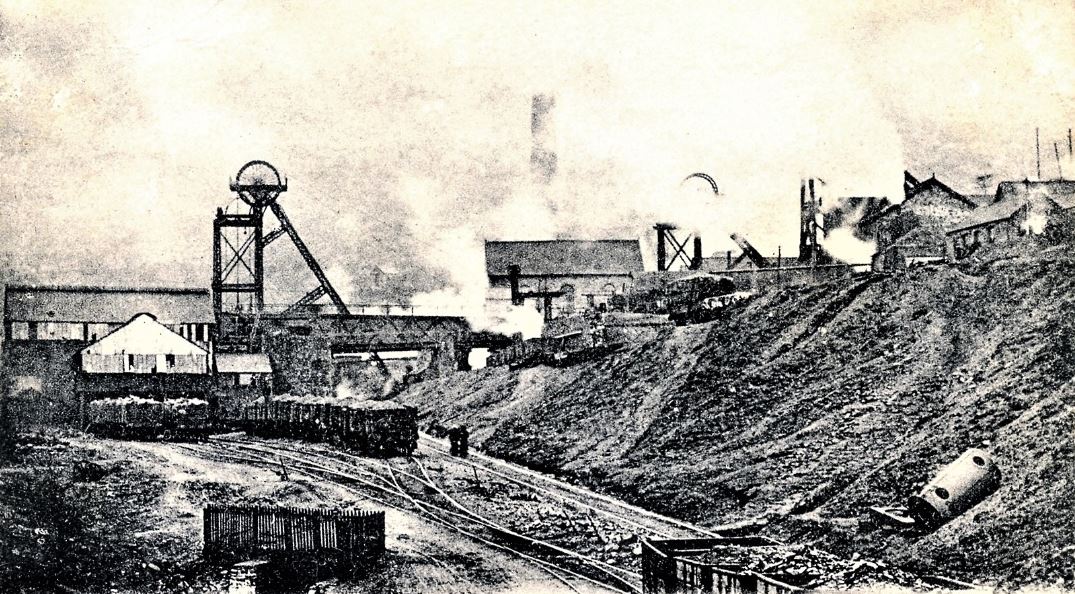Mountain Ash, Cynon Valley (05279867)
 This mine was listed in 1884/96 as being owned by the Aberdare Works and Collieries Company and managed by David Thomas in 1884 and Henry Henry in 1896. It employed 39 men underground and 4 men on the surface. It is shown in 1908 as being managed by H. John and having 3 men working underground, and in 1918 as being managed by A.H. Williams with 2 men underground and 5 men on the surface. It was not shown on the 1921 map of the Coalfield, but listed in 1922/3 as owned by Llewellyn (Nixon) Ltd. and managed by A.C. or R.C. Morgan. In 1932 it was managed by B.R. Edwards and worked in the Graig seam. It was sunk to a depth of 598 feet 8” and worked the Abergorky (Graig) seam at a thickness of between 22” to 32”, and the Gorllwyn (Clay) seam at a thickness of between 24 inches to 27 inches. The downcast shaft was 15 feet in diameter.
This mine was listed in 1884/96 as being owned by the Aberdare Works and Collieries Company and managed by David Thomas in 1884 and Henry Henry in 1896. It employed 39 men underground and 4 men on the surface. It is shown in 1908 as being managed by H. John and having 3 men working underground, and in 1918 as being managed by A.H. Williams with 2 men underground and 5 men on the surface. It was not shown on the 1921 map of the Coalfield, but listed in 1922/3 as owned by Llewellyn (Nixon) Ltd. and managed by A.C. or R.C. Morgan. In 1932 it was managed by B.R. Edwards and worked in the Graig seam. It was sunk to a depth of 598 feet 8” and worked the Abergorky (Graig) seam at a thickness of between 22” to 32”, and the Gorllwyn (Clay) seam at a thickness of between 24 inches to 27 inches. The downcast shaft was 15 feet in diameter.
In the 1930s Sir David R. Llewellyn had become one of the most powerful owners in the South Wales Coalfield. The Llewellyn (Nixon) Group controlled Cwmcynon, Nixon’s Navigation, Deep Duffryn, Abergorky and Merthyr Vale which in 1934 had a combined output of 2,100,000 tons of coal and an manpower of 6,290. Other companies with the Llewellyn name at that time were; Llewellyn (Cyfarthfa) Ltd., Llewellyn (Plymouth) Ltd., and D.R. Llewellyn & Sons Ltd. In all, Llewellyn was chairman of 20 different colliery companies in South Wales whose annual output exceeded 15,000,000 tons. In 1935 the colliery came under the newly formed Powell Duffryn Associated Collieries Limited with the manager being G. Morgan (he was manager in 1930). In 1938 T.J. James was manager and the mine employed 245 men underground and 25 men on the surface while in 1943/5 the manager was R.V. Phillips. PD retained control until Nationalisation in 1947. On the 29th of October 1943, this colliery broke its productivity target for the 23rd week running, a new South Wales record. Its target was 2,490 tons of coal per week.
On Nationalisation it was placed in the National Coal Board’s, South Western Division’s, No.4 (Aberdare) Area and at that time it was managed by A.J. Tennant. Mt. Tennant was still the manager in 1949. In 1955 out of a total of 340 men employed at this colliery, 165 of them worked at the coalfaces, this figure rose to 174 men in 1956 and 170 working at the coalfaces in 1958. During this time D.E. Jenkins was the manager. In 1961 this colliery was in the No.3 Group of the No.4 Area along with Deep Duffryn, Fforchaman and Aberaman collieries, total manpower for the group was 2,174 men, and total coal production for that year was 515,000 tons. The group manager was R.N. Lewis and the area manager was T. Wright.
In June of 1967, this colliery was working two coalfaces in the Graig seam. This seam had a section of coal 28 inches, dirt 3 inches, inferior coal 4 inches, and coal 4 inches in that area and the two faces were fully mechanised with shearers and self-advancing supports. The C18 was 157 yards long and had 870 feet of life left while the C21 was 148 yards in length and had 1,700 yards of life left.
The NCB expressed concern over the high level of absenteeism at this mine, 23%, and over the low output per manshift figure of 21 hundredweight
when they expected 31 cwt. It was closed by the National Coal Board in August 26th 1967 on the grounds that it was uneconomic. It was also used by the NCB as the site for a central stores, a central workshop and a road transport depot.
Some Statistics:
- 1901: Manpower: 97.
- 1902: Manpower: 116.
- 1922: Manpower: 143.
- 1923: Manpower: 271.
- 1924: Manpower: 541.
- 1925: Manpower: 86.
- 1927: Manpower: 236.
- 1928: Manpower: 258.
- 1930: Manpower: 300.
- 1933: Manpower: 312.
- 1934: Manpower: 315 Output: 100,000 tons.
- 1937: Manpower: 273.
- 1938: Manpower: 270.
- 1940: Manpower: 316.
- 1941: Manpower: 398.
- 1942: Manpower: 388.
- 1943: Manpower: 374.
- 1944: Manpower: 354.
- 1945: Manpower: 374
- 1947: Manpower: 396.
- 1948: Manpower: 387. Output: 115,000 tons.
- 1949: Manpower: 391. Output: 125,000 tons.
- 1950: Manpower: 442.
- 1953: Manpower: 404. Output: 114,000 tons.
- 1954: Output: 98,154 tons.
- 1955: Manpower: 340. Output: 87,104 tons.
- 1956: Manpower: 399. Output: 90,759 tons.
- 1957: Manpower: 410. Output: 85,447 tons.
- 1958: Manpower: 387. Output: 70,059 tons.
- 1960: Manpower: 366. Output: 81,000 tons.
- 1961: Manpower: 351. Output: 87,190 tons.
- 1962: Manpower: 339.
- 1964: Manpower: 391. Output: 125,000 tons.
Information supplied by Ray Lawrence and used here with his permission.
Return to previous page
